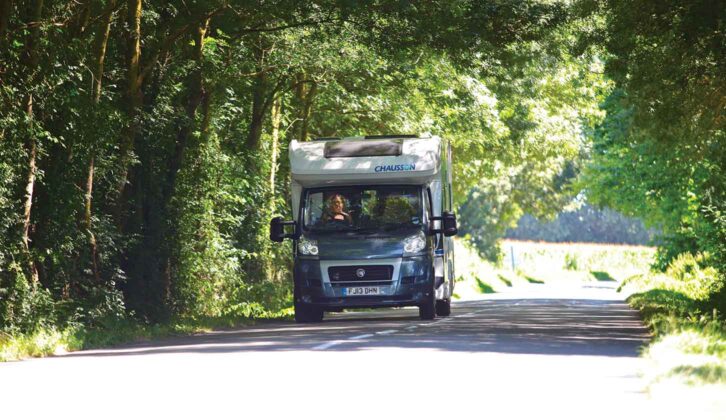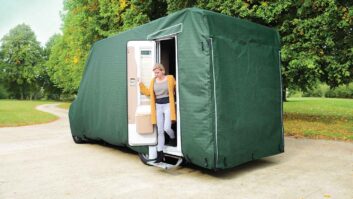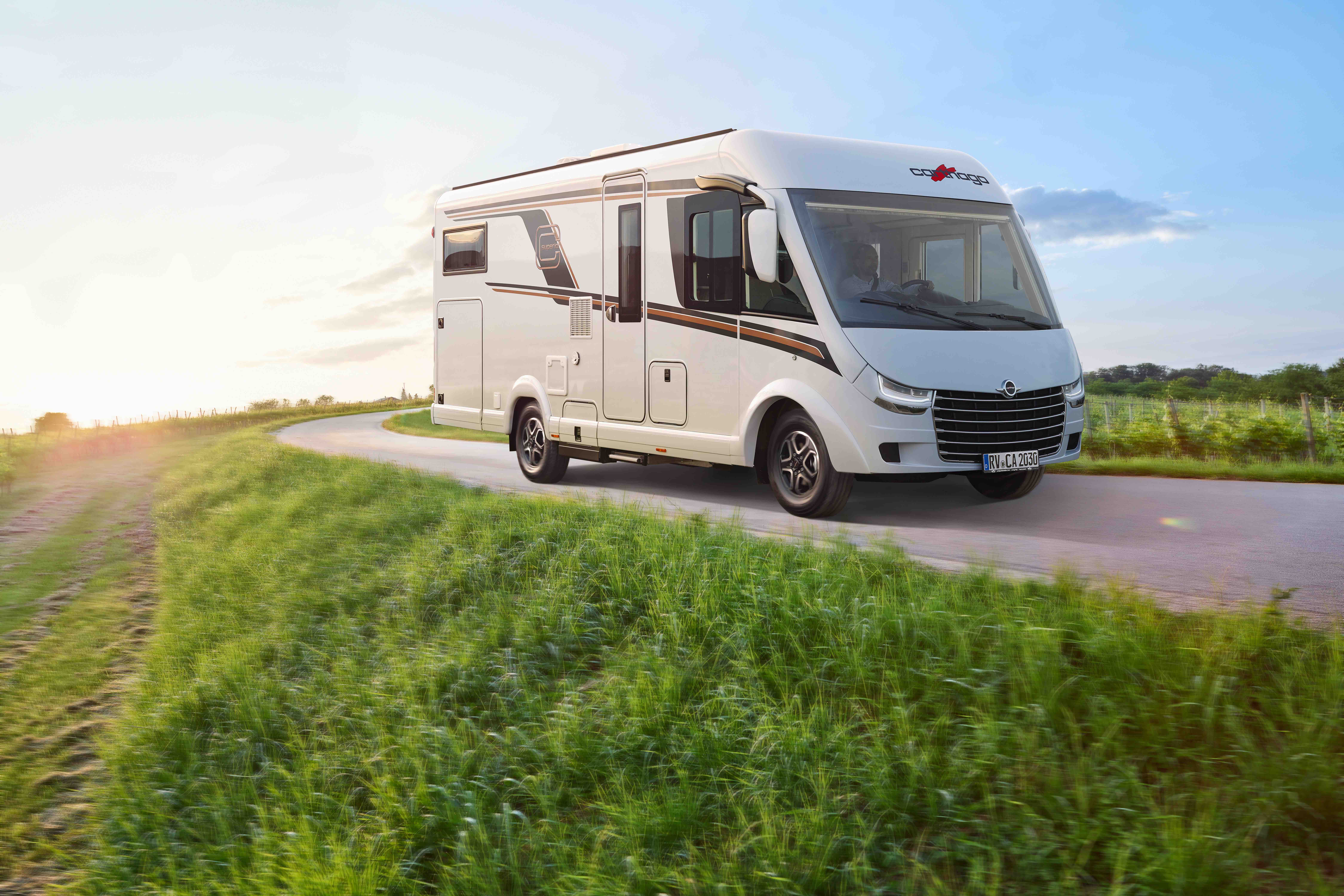When it comes to driving and manoeuvring, following a few simple steps can have a big impact, not only making you a better motorhome driver but also helping you enjoy more stress-free journeys.
Some advance preparation and an attentive attitude to your driving will make trips to your campsite (see: the best motorhome sites if you’re after some inspiration) more enjoyable and safe, as we explain here.
1 Before you set off
Safe driving starts long before you turn the key in the ignition – you should be ensuring your motorhome is ready to go before every trip.
Take a look at the condition of your motorhome tyres. Check that there are no cuts or bulges and there’s plenty of tread left (at least 1.6mm across the central three-quarters of the tread all the way around the tyre).
Make sure there’s the correct motorhome tyre pressure, too.
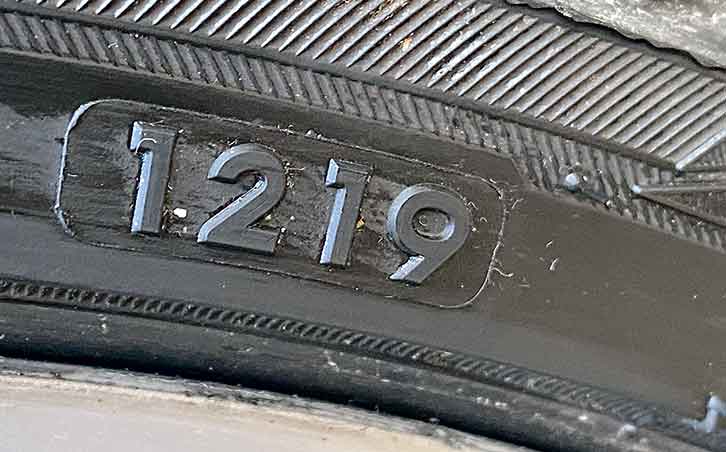
Don’t overlook the spare tyre either. Some have a tyre-repair kit instead of a spare – if this applies to you, check its use-by date to see if the sealant needs replacing.
Make sure you have ample screen washer fluid and the engine oil is at the correct level. If your motorhome potentially requires AdBlue, carry that with you too – the latter is available in much smaller containers these days, which will help save your payload.
Carry out these checks a few days in advance if you’re setting off on a long journey – this will give you the time to buy anything you need.
2 Carefully load your motorhome
Knowing how to load your motorhome makes life a lot easier. Keep heavy items low down, directly above the axle(s). Retaining bars can be used to stop things moving around while you’re on the road – it’s easy for luggage to shift in the ’van, especially if you brake heavily. Only use the overhead lockers for light items.
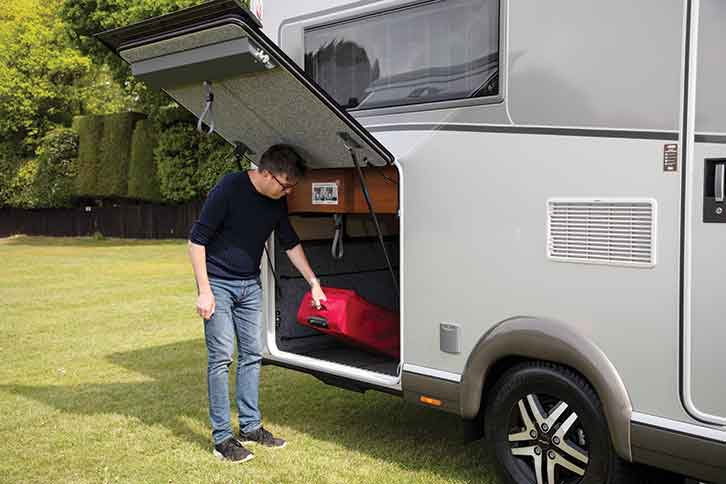
3 Give yourself plenty of space
Anticipation will be doubly important if you’re driving a heavy vehicle.
The heavier the ’van, the more your stopping distances will increase, so it’s very important to leave plenty of space for the vehicle in front.
For regular driving, you should leave a two-second gap as a rule of thumb, so we would always advise increasing this interval while driving a motorhome – and doubling it in wet weather.
Overtaking is a trickier manoeuvre in a larger vehicle. This is because your motorhome accelerates more slowly than a regular car, and you’ll also need to allow for the extra length of the ’van when changing lanes on the motorway. As a result, you should be especially cautious and only overtake when you’re certain that it is safe to do so.
Check out our motorhome driving tips guide for more guidance when you’re on the road.
4 Beware of the overhang
Walk around a coachbuilt motorhome and you’ll likely see there’s ‘a lot of it’ behind the rear wheels.
Thus, when emerging from a narrow opening – your driveway, say – always proceed straight ahead until the rear is clear, before turning left or right.
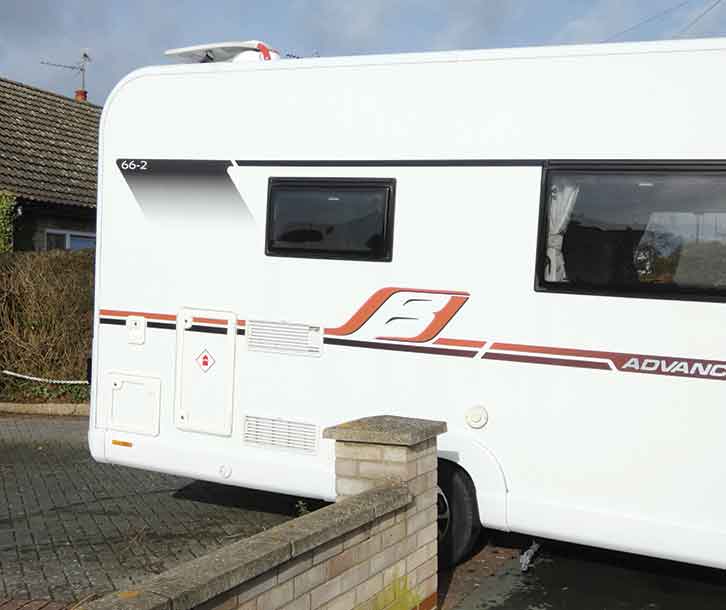
Changing direction prematurely might result in ‘tail swiping’ of the gateposts, or other obstacles.
A useful tip is to note that the mirrors stick out further than the bodywork. So if your mirrors fit through a gap, the motorhome will too!
5 Stick to the speed limits
Speed limits for motorhomes with a maximum unladen weight of 3050kg are the same as for cars. Heavier ’vans – those with an unladen weight of more than 3050kg – are restricted to 50mph on single carriageways, 60mph on dual carriageways and 70mph on motorways.
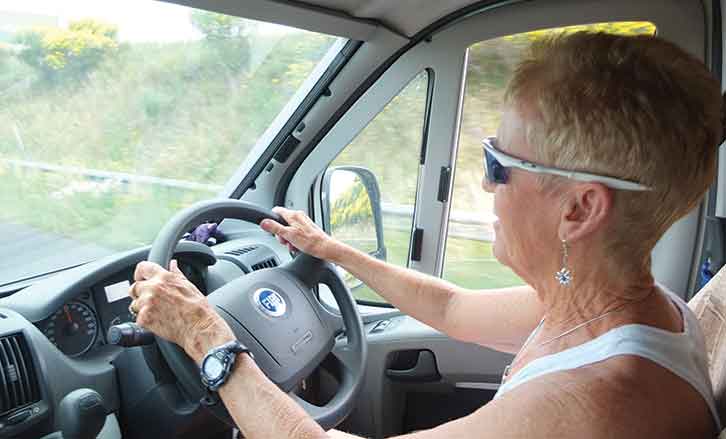
When you are towing a trailer in either case, the speed limit is 60mph on dual carriageways and motorways.To find out more about the limits, visit www.gov.uk/speed-limits.
6 Take a training course
The Caravan and Motorhome Club, The Camping and Caravanning Club and a number of driving schools run specialist motorhome courses.
The C&CC course, at its HQ near Coventry (CV4 8JH), costs £160 for members, £185 for non-members. This year is fully booked, but you can register interest for 2024..
The Caravan and Motorhome Club course costs £184. The Club carries out driver training courses at 18 sites across Scotland, England, Wales and Northern Ireland.
7 Know your (size) limits
Many sat-navs can be set to take into consideration high/heavy vehicles when route planning – the best motorhome sat navs can be programmed with your ’van’s dimensions, and the unit will then allow for this when devising a suitable route for you.
They’re not infallible, though – you should always be sure to pay attention to road and warning signs, to avoid getting into a sticky situation.
It’s also a good idea to have the dimensions of your vehicle (height, width, length and weight info) to hand when you’re in the driving seat – some motorhomers print out the information and keep it attached to the dashboard.
8 If the worst should happen
Fortunately, serious collisions involving motorhomes are rare. However, accidents can occur to even the best prepared.
In the event of one, find a safe place to stop, assuming the motorhome can still be driven. It may be easier said than done when you’re in a larger vehicle, but once you’re parked away from other traffic, you’ll be safer.
Switch your hazard warning lights on and turn the engine off. Then, if you have one, put on a high-vis jacket. This is worth having for every passenger onboard too – if you travel abroad, it’s usually the law to wear one if you’re in an incident as well.
Call the emergency services if someone has been hurt, and help the injured if it’s possible, without putting yourself in danger from traffic. Quiet casualties may need first aid more desperately than someone who is crying for help. If you’re in a dangerous spot or blocking the road, you should also ring the police.
A warning triangle can be placed in the road as a warning to other traffic if required, but avoid putting yourself at risk of other traffic as you do so.
Should nobody be hurt, you should instead photograph any damage, exchange insurance details with other drivers, and get the names and contact details of witnesses.
- Interested in more tips to help you improve your tours? Find out what you can do to improve your motorhome fuel consumption to see what you can do to improve your ‘van’s efficiency.
If you’ve enjoyed reading this article, why not get the latest news, reviews and features delivered direct to your door or inbox every month. Take advantage of our brilliant Practical Motorhome magazine SUBSCRIBERS’ OFFER and SIGN UP TO OUR NEWSLETTER for regular weekly updates on all things motorhome related.
